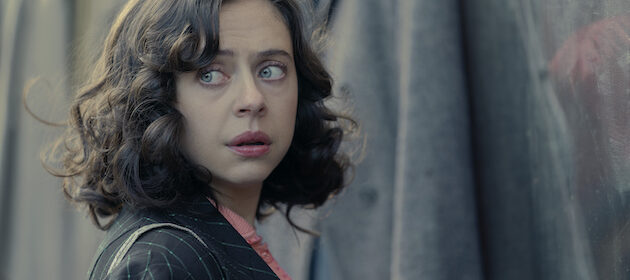A Small Light: 6 Things to Know About NatGeo's Gripping, Moving New Take on the Story of Anne Frank

A Small Light co-showrunner Joan Rater knows that Anne Frank’s story ends in heartbreaking, horrifying fashion. We all do. Frank’s diary, written while the teenage Jewish girl and her family hid from Nazis in World War II-era Amsterdam, comes to an abrupt close when their secret annex is raided. Anne, and most of her family, later died in concentration camps.
“When I read the diary, still to this day — Joan Rater, 60 years old — I get so caught up in Anne’s humanity and in her everyday stuff, her amazing voice and just in her that I find myself going, ‘Maybe this time, surely she’s not going to die?’” she says. “Because you can’t believe that somebody this wonderful won’t have a happy ending.”

“These were people who laughed and made jokes and got mad and had sex, you know what I’m saying?” Rater adds. “They didn’t know the end. The people who were hiding up in the annex didn’t know how this would end. They had hidden for two years, and they believed, once liberation happened, that they were going to make it.”
The series takes viewers inside those years but tells the story from a different perspective: That of Miep (played by The Morning Show’s Bel Powley), an opinionated young woman who quickly, enthusiastically agrees to her boss’ life-or-death request and then finds herself thrust into the resistance movement. With that framing, viewers are privy to life both inside and outside the annex where the Franks secreted themselves away with the van Pels and Pfeffer families.
“I wanted to make something that felt relatable, that wiped the cobwebs off the story,” says Rater, a veteran EP who, like Phelan, lists Grey’s Anatomy, Fire Country, Madam Secretary and Council of Dads on her resume. Ahead of A Small Light’s premiere, here are a few key things to know about the historical drama.

WHEN AND WHERE TO WATCH | The eight-episode series will have a two-episode premiere on Monday, May 1, at 9/8c on National Geographic, Nat Geo WILD and Lifetime simultaneously. Those episodes also will air on Freeform on Saturday, May 6, at 8 pm. Two new episodes will debut subsequent Mondays at 9 on National Geographic, and will be available to stream the following day on Disney+ and Hulu.
A FRESH TAKE | “People think they know this story, but they don’t know Miep’s story,” Rater says. “Because everything we know about Miep, we know from Anne. And Miep couldn’t tell Anne all the other stuff she was doing outside the annex.” Along those lines, viewers will get to know Powley’s character as a plucky young woman looking for work and love in late 1930s Amsterdam before they are introduced to Otto Frank and his family. “On the other side of that bookcase was a whole other coming-of-age story happening,” she adds.


SPEAKING THE SAME LANGUAGE | Though A Small Light takes place in Amsterdam, and all of its characters are either Dutch or German, “we didn’t want accents to get in the way, ever,” Rater says. “We didn’t want you to think about them.” So the Dutch characters, like Miep, speak with a British accent, and the German characters, like Otto, speak with a German one. In addition, to hammer home the ugly, shocking nature of anti-Jewish sentiment leading up to the Nazi occupation of Amsterdam, Rater, Phelan & Co. made a bold choice. “Do we have those iconic yellow stars and certain signage in Dutch, or do we have it in English?” she says. “Because the yellow stars [which Jews were forced to wear] said ‘Jude.’ Well, to have it say ‘Jew’ suddenly, right away, it smacks you in the face and you can understand how the Jews felt… So that’s a way we used language to our benefit.”
Are you planning to watch A Small Light? Hit the comments and let us know!
Source: Read Full Article

